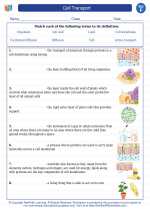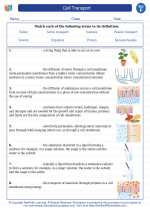RNA: Ribonucleic Acid
RNA, or ribonucleic acid, is a molecule that is essential for the coding, decoding, regulation, and expression of genes. It is a single-stranded molecule that plays a crucial role in the synthesis of proteins.
Types of RNA
- Messenger RNA (mRNA): Carries the genetic information from the DNA in the nucleus to the ribosomes in the cytoplasm, where protein synthesis occurs.
- Transfer RNA (tRNA): Helps in the translation process by bringing the amino acids to the ribosome, where they are linked together to form a protein.
- Ribosomal RNA (rRNA): Makes up the ribosomes, which are the protein-synthesizing machinery in the cell.
Functions of RNA
RNA plays several critical roles in the cell, including:
- Transcription: RNA is synthesized from a DNA template in a process called transcription.
- Translation: mRNA carries the genetic code from the DNA to the ribosomes, where it is translated into a specific sequence of amino acids to form a protein.
- Regulation of gene expression: Certain types of RNA, such as microRNA (miRNA) and small interfering RNA (siRNA), play a role in regulating the expression of genes.
Structure of RNA
RNA is composed of nucleotides, which consist of a sugar (ribose), a phosphate group, and a nitrogenous base (adenine, guanine, cytosine, or uracil). Unlike DNA, RNA contains the base uracil (U) instead of thymine (T).
Study Guide
Here are some key points to remember when studying RNA:
- Understand the different types of RNA and their functions.
- Learn the process of transcription and translation, and the role of RNA in these processes.
- Be able to identify the components of a RNA nucleotide and how they differ from those of a DNA nucleotide.
- Explore the role of RNA in regulating gene expression.
Understanding RNA is crucial for comprehending the central dogma of molecular biology and the overall functioning of the cell.
[Rna] Related Worksheets and Study Guides:
.◂Science Worksheets and Study Guides Sixth Grade. Cell Transport
Worksheet/Answer key Cell Transport
Cell Transport  Worksheet/Answer key
Worksheet/Answer key Cell Transport
Cell Transport  Vocabulary/Answer key
Vocabulary/Answer key Cell Transport
Cell Transport  Vocabulary/Answer key
Vocabulary/Answer key Cell Transport
Cell Transport 

 Worksheet/Answer key
Worksheet/Answer key
 Vocabulary/Answer key
Vocabulary/Answer key
 Vocabulary/Answer key
Vocabulary/Answer key

The resources above cover the following skills:
Reading Standards for Literacy in Science and Technical Subjects
Craft and Structure
Determine the meaning of symbols, key terms, and other domain-specific words and phrases as they are used in a specific scientific or technical context relevant to grades 6-8 texts and topics.